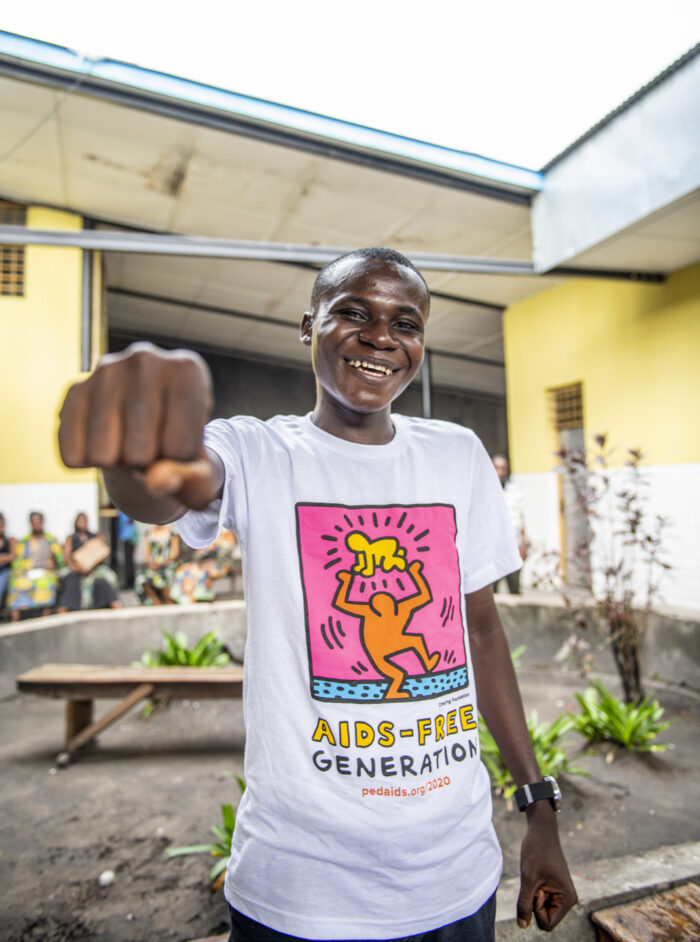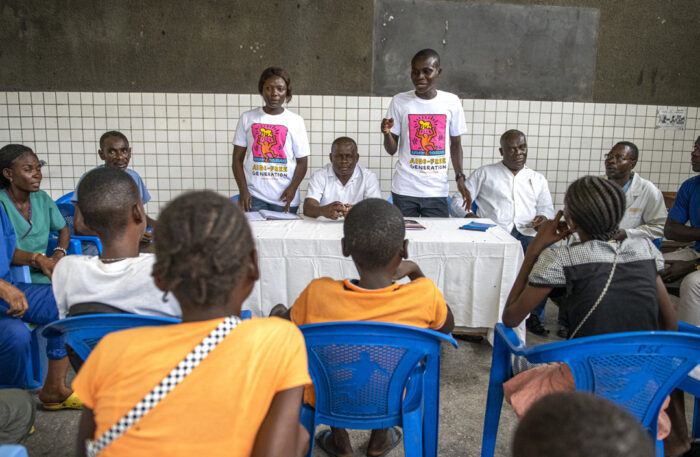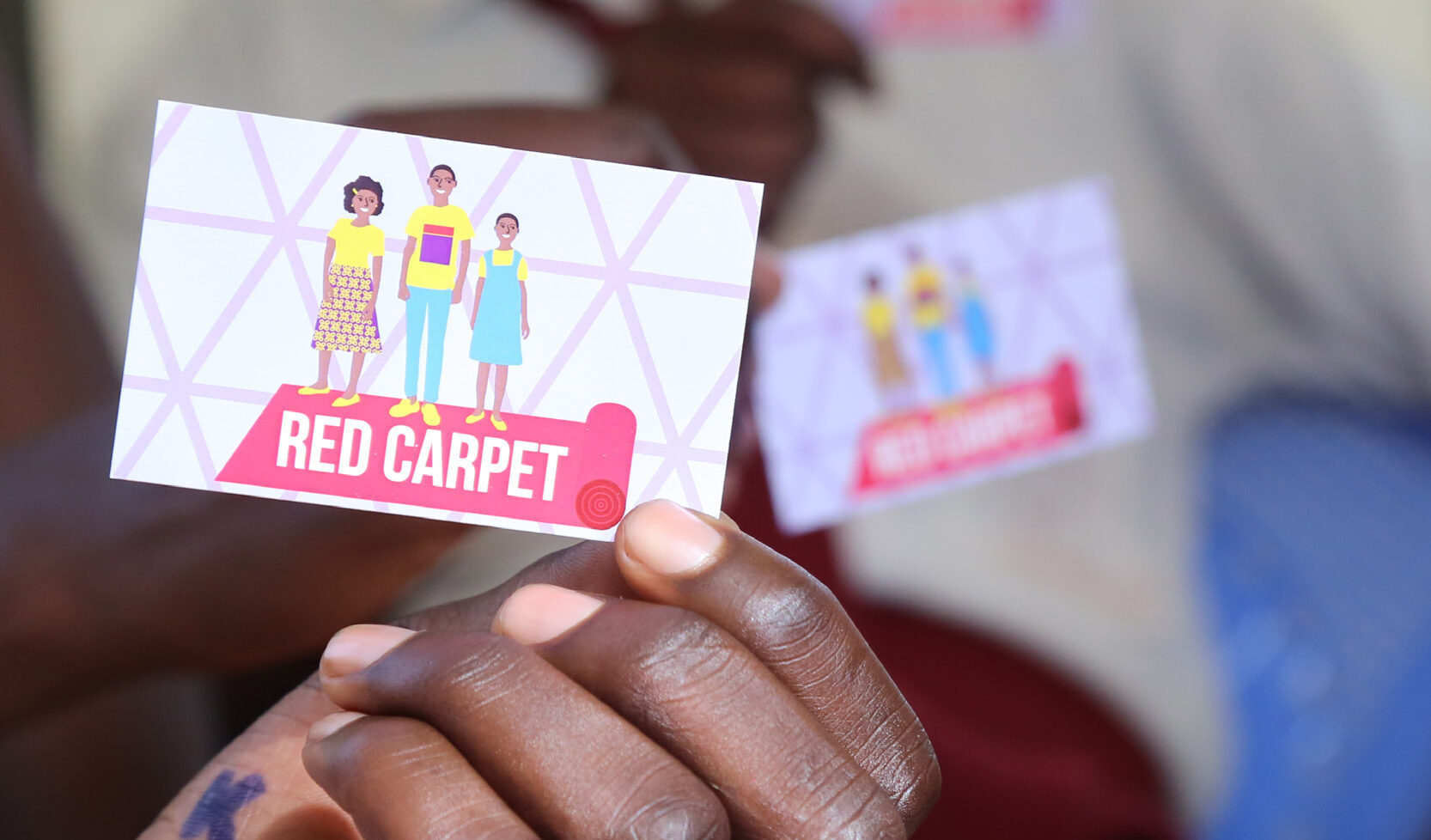Children and Adolescents Living with HIV in the Democratic Republic of the Congo
There are roughly 48,000 children1 and 50,000 adolescents2 in the Democratic Republic of the Congo (DRC) living with HIV. Children and adolescents living with HIV (CALHIV) encounter various and unique challenges around adhering to medication and achieving and maintaining viral load suppression (VLS). For example, persistent stigma and discrimination and treatment literacy gaps contribute to low disclosure rates and suboptimal treatment outcomes, including viral load coverage and suppression.
In recognition of gaps in disclosure, adherence, and VLS among CALHIV, the Elizabeth Glaser Pediatric AIDS Foundation (EGPAF) in the DRC adapted an evidence-based approach to strategically engage CALHIV and their caregivers to build treatment literacy and empower their treatment management.
The Yika Mpiko Model
Yika Mpiko (YM), meaning courage, was developed as a multidisciplinary approach to address high viral load and low disclosure rates among CALHIV and their caregivers in DRC. The Yika Mpiko model was adapted based on the Timiza Ndoto and Jitmabue initiatives from EGPAF in Tanzania. Jitamabue is a pediatric-focused treatment optimization and disclosure support model. Timiza Ndoto—a quarterly, one-day workshop—focuses on empowering adolescents and their treatment supporters to reframing adherence as a pathway to achieve their life dreams. Analysis of the initiative revealed that suppression rates improved significantly. Adolescents with high viral load (defined as more than 1000 copies/mL) had statistically significant higher rates of secondary VLS after participating in Timiza Ndoto (68%) compared to the standard of care sites (51%).3
The Yika Mpiko model utilizes multidisciplinary, facility-based teams (MDT) to address recognized gaps in disclosure, treatment optimization, and VLS for unsuppressed CALHIV in EGPAF-supported healthcare facilities and health zones. The Yika Mpiko model combines case-management and workshop approaches that allow CALHIV clients and their caregivers to improve VLS, given that caregivers are a key pillar in supporting the treatment and case management of CALHIV.
Implementation of the Yika Mpiko Model
 Following the adaptation of tools, youth peer leaders, health care workers (HCWs), and existing MDT at health care facilities were trained on the approach. The heath zone teams were sensitized and engaged in the model’s design and implementation. HCWs received a refresher training in optimized pediatric formulations. The MDT at health care facilities includes doctors, pharmacists, nurses, counselors, youth peers, and data clerks. Utilizing a zonal approach, participating facilities line listed all CALHIV not reaching VLS. The first district to conduct this model was the Masina district. Each patient record was reviewed, and, based on individual needs, case management, and treatment optimization assessments were initiated, with support from the MDT. Invitations for a one-day workshop were sent to unsuppressed CALHIV and their caregivers.
Following the adaptation of tools, youth peer leaders, health care workers (HCWs), and existing MDT at health care facilities were trained on the approach. The heath zone teams were sensitized and engaged in the model’s design and implementation. HCWs received a refresher training in optimized pediatric formulations. The MDT at health care facilities includes doctors, pharmacists, nurses, counselors, youth peers, and data clerks. Utilizing a zonal approach, participating facilities line listed all CALHIV not reaching VLS. The first district to conduct this model was the Masina district. Each patient record was reviewed, and, based on individual needs, case management, and treatment optimization assessments were initiated, with support from the MDT. Invitations for a one-day workshop were sent to unsuppressed CALHIV and their caregivers.
The workshops were held in specified locations at the health care facilities during the week and on weekends. The workshop consisted of joint and separate sessions for caregivers and CALHIV. Caregiver sessions covered information on microbes and antibodies, adherence, disclosure, and their role as treatment supporters. An expert caregiver was invited to share their experiences and advise on disclosure and treatment management. Practical sessions include the review of medication provision. Caregivers were asked to bring the CALHIV’s medication to the workshop to build their understanding and competency of the correct way to facilitate medication adherence for their child. Transport reimbursement was provided to facilitate participation in the workshops. Before the workshop ended, a WhatsApp group was developed to allow for ongoing engagement between caregivers and HCWs following the workshop.
CALHIV sessions consisted of disclosed and undisclosed groups and covered root causes of nonadherence and goals for living a healthy life. Youth peer educators supported the facilitation of the session by providing perspective and support. Sessions were designed to focus on the goals and dreams of adolescents in reframing the idea of adherence, shifting from a clinical reference to one where it is a pathway to achieving individual goals and life dreams. For those eligible for a viral load test, one was scheduled for the day of the workshop. Three months after the workshop, a follow-up viral load test was conducted on CALHIV participants.
Impact
Following a successful pilot, the Yika Mpiko model was scaled up to the four remaining health zones. Overall, 97 CALHIV were identified as virally unsuppressed. Across the five health zones, 72% (70) of eligible CALHIV were enrolled in the Yika Mpiko model. Following participation in the workshops, 42 CALHIV, out of the 44 with a follow-up viral load test result, were resuppressed, signifying a 95% resuppression rate (Figure 1). Those who were not yet suppressed had an individual follow-up to identify the challenges and barriers and develop a plan of action.
Prior to the workshop, 51% (36/70) of CALHIV indicated that they did not have their HIV status disclosed by a caregiver. Of those who had not been disclosed to, 21 were initiated in the disclosure process following the workshop, and 71% (15/21) were thereafter fully disclosed to. Furthermore, linkage to partners—focused on orphans and vulnerable children (OVC) services—was a priority to ensure complementary support services were available to the CALHIV and their families. Of those eligible, 84% (21/25) were successfully linked to OVC programming.

Lessons Learned
Throughout the adaptation and implementation of the Yika Mpiko model, several valuable lessons and best practices came to light:
- The involvement of teen peer educators improves the follow-up of CALHIV in providing individual-focused support from a trained youth
- Engaging CALHIV and caregivers is critical to improving adherence, VLS, and disclosure through interactive and empowerment-based activities, building capacity and know-how
- Intentionally including an expert caregiver in sessions during the Yika Mpiko model’s workshop promotes connection and support among caregivers, particularly in relation to disclosure support
- Utilizing WhatsApp groups supports communication between caregivers and providers after workshops
are completed - The integration of the Yika Mpiko model with existing MDT structures at health care facilities supported its implementation and allowed for layered support, such as treatment optimization, treatment literacy counseling, and disclosure support
Conclusions
The Yika Mpiko model empowers caregivers and CALHIV in building their treatment literacy and facilitates their achievement of viral load resuppression.
1 https://pedaids.org/wp-content/uploads/2018/01/DRC_US_June2018.pdf
2 https://www.mdpi.com/2227-9067/9/8/1239
3 https://pedaids.org/wp-content/uploads/2020/11/timiza-ndoto-project-brief-081821.pdf




